Intro
Since about 10 months ago the main rocket fuel I have been using is KNSB propellant, and its worked amazingly
Now, in preparation of the first static test of MM-38 I have been busy preparing and subsequently casting BATES grains of the stuff
Now for those who don’t know, a BATES (Standing for BAllistic Test and Evaluation System) is a type of fuel grain geometry that burns at both ends and inside a hollow core, but has its outsides inhibited
(A grain means a unit or block of fuel, and inhibited means it does not burn on that surface)
This allows the thrust to be kept relatively constant during the duration of the burn, by keeping the total surface area under combustion mostly the same
To be fair, I did not figure out all this by myself, I got a tremendous amount of help from a fellow rocketeer and veteran in the field, who also generously donated MM-38 (Thanks again!)
Preparation and Casting
Before you can cast fuel, you first need fuel.
my propellant of choice is KNSB Propellant,
which is 65/35 Potassium nitrate / Sorbitol by weight
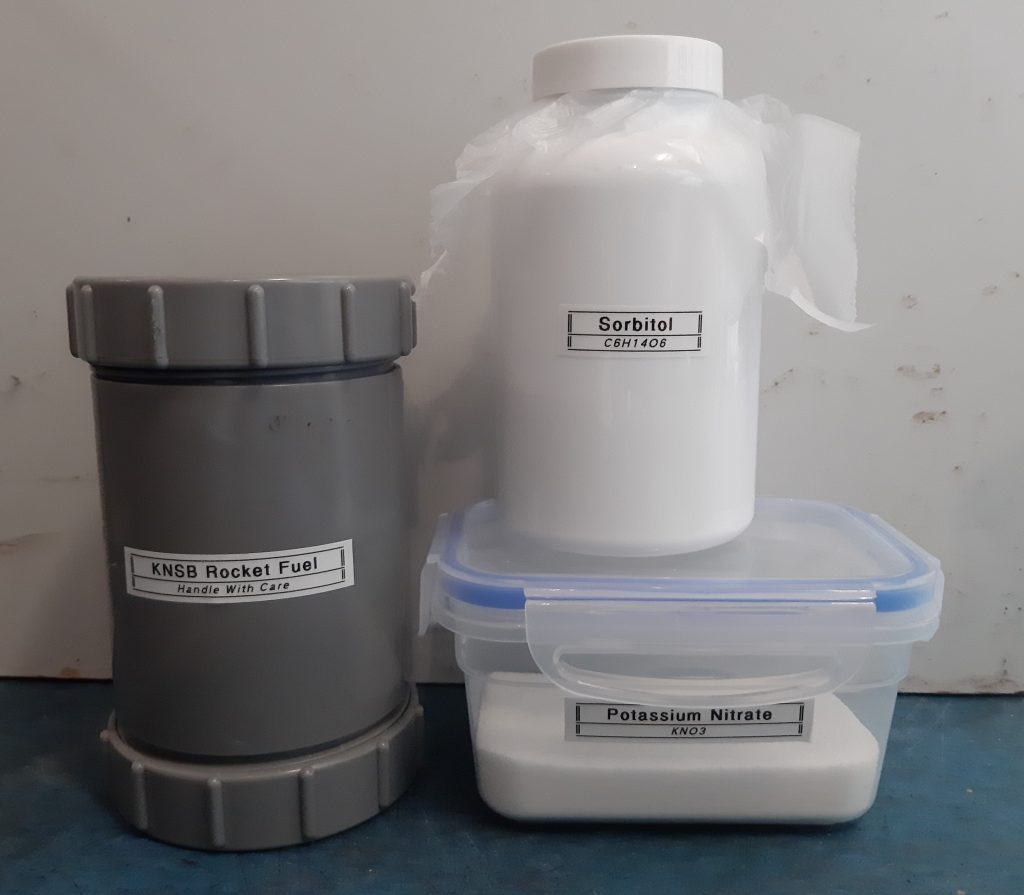
These ingredients are ground to a fine powder, weighed and then mixed by shaking (a ball mill is under development)
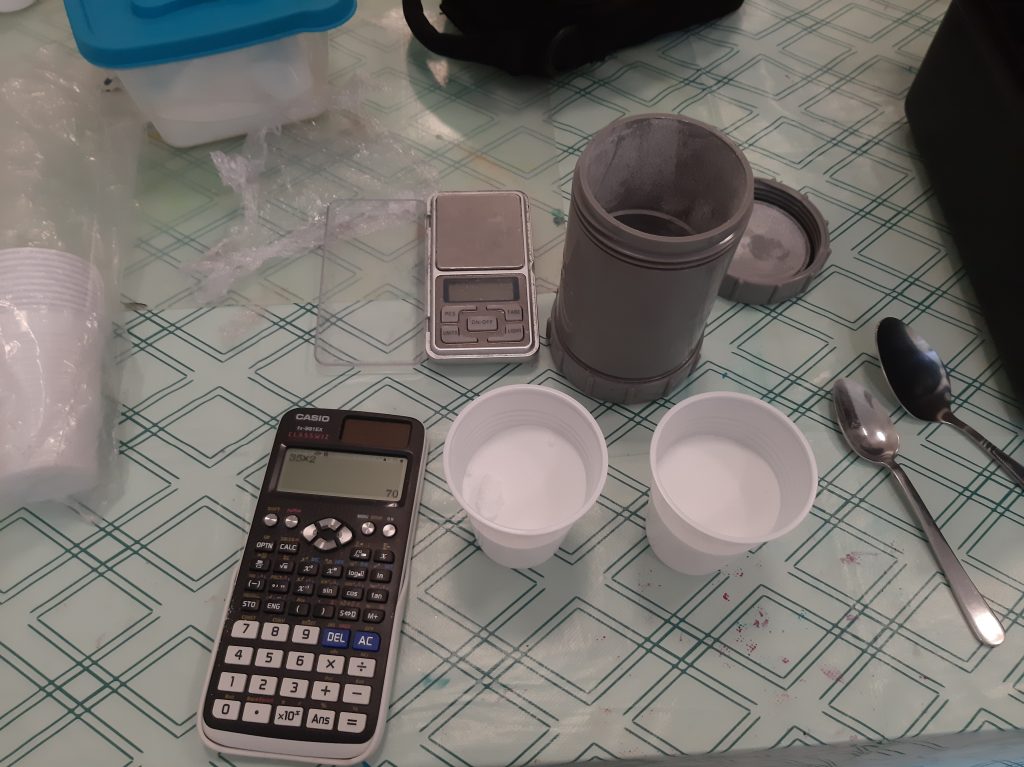
Then, a hot plate is employed to melt the fuel
Due to the relatively high melting point of potassium nitrate (and relatively low melting point of Sorbitol) only the Sorbitol is melted, with the nitrate staying in suspension
This has the added benefit that Sorbitol ‘Plasticizes’, meaning that after heating it to a certain point, it remains malleable until it ‘Cures’ to be rock hard after a few hours, which is very handy when trying to cast a block of the stuff

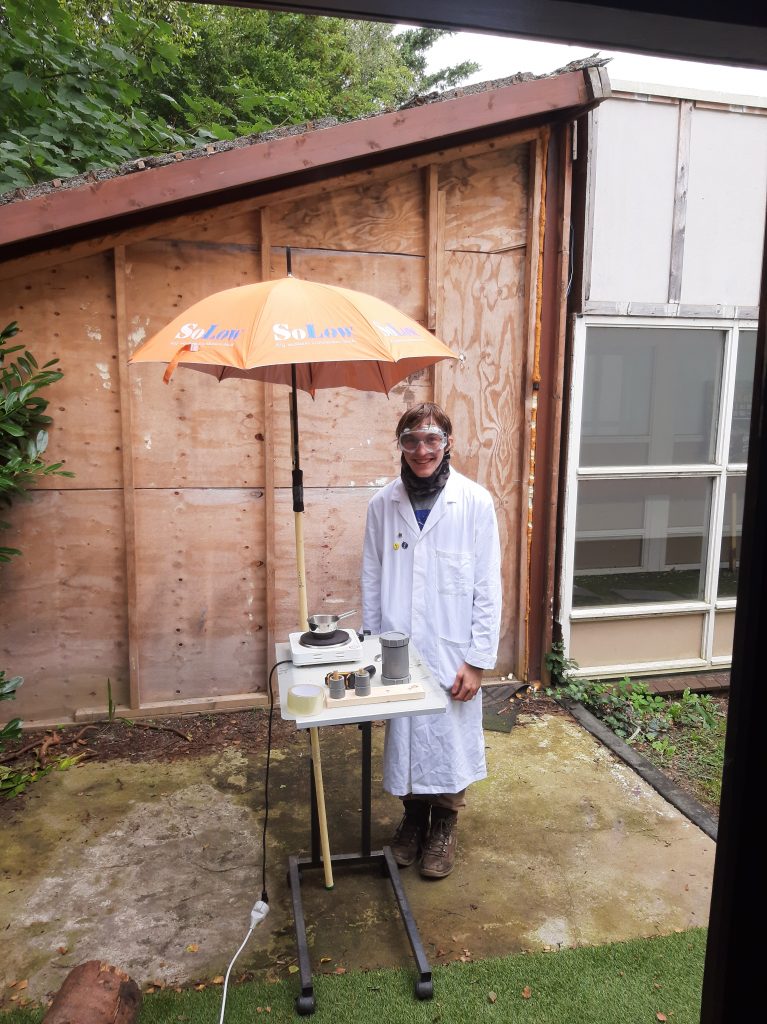
falling airborne moisture
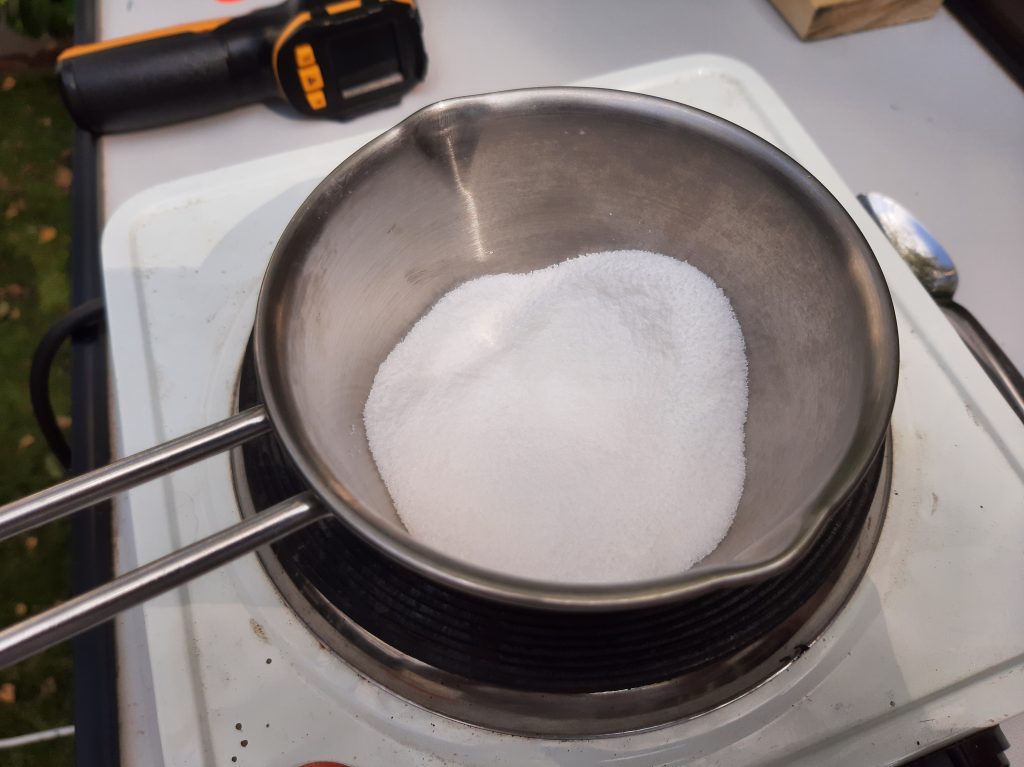
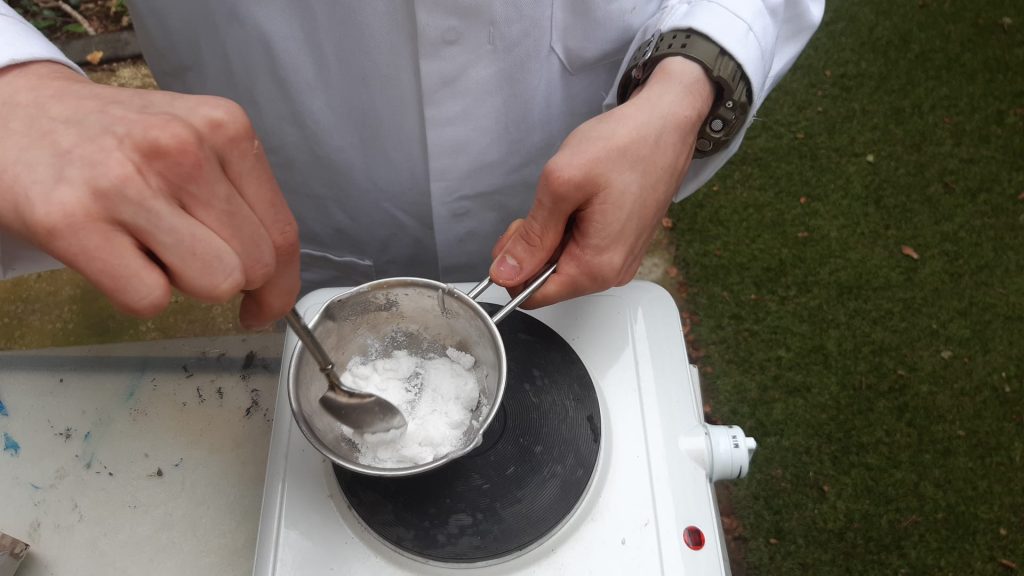
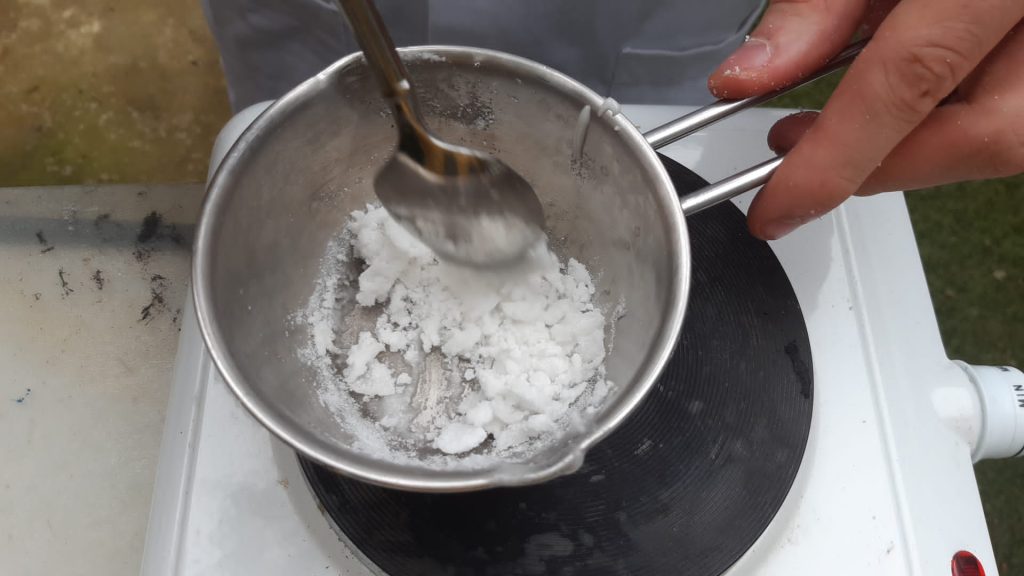
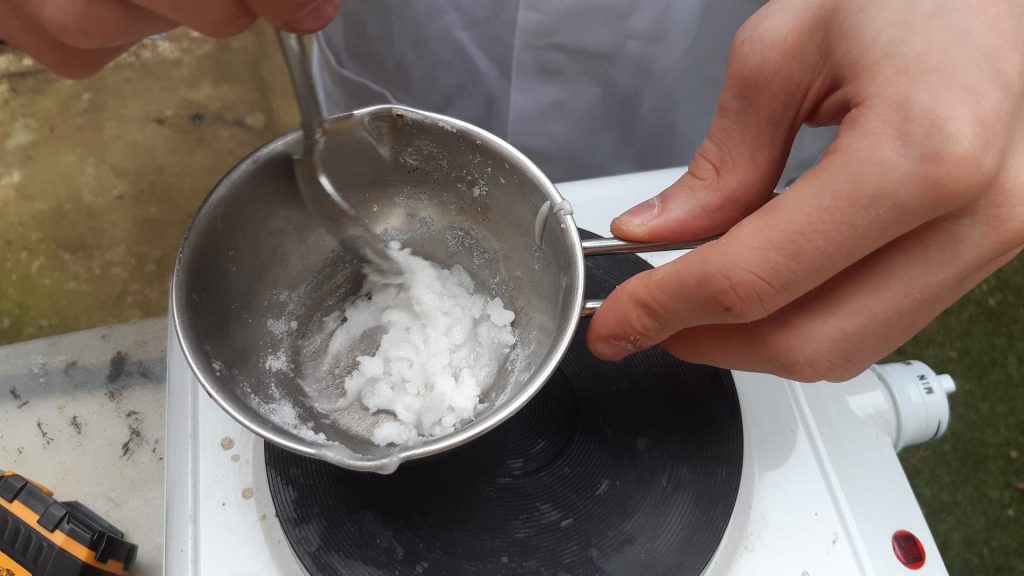

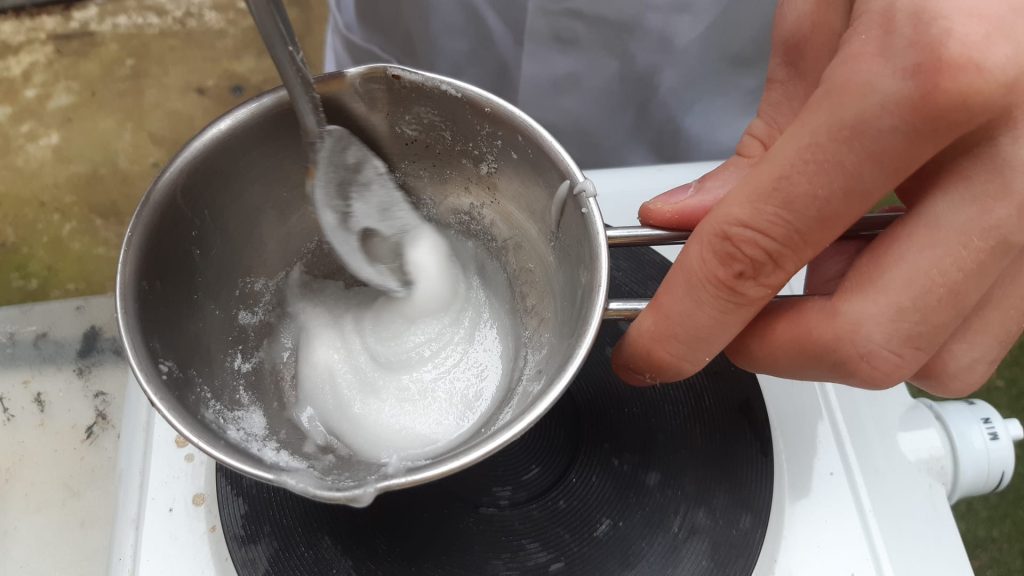
After melting, it is poured into a mold to form the grain
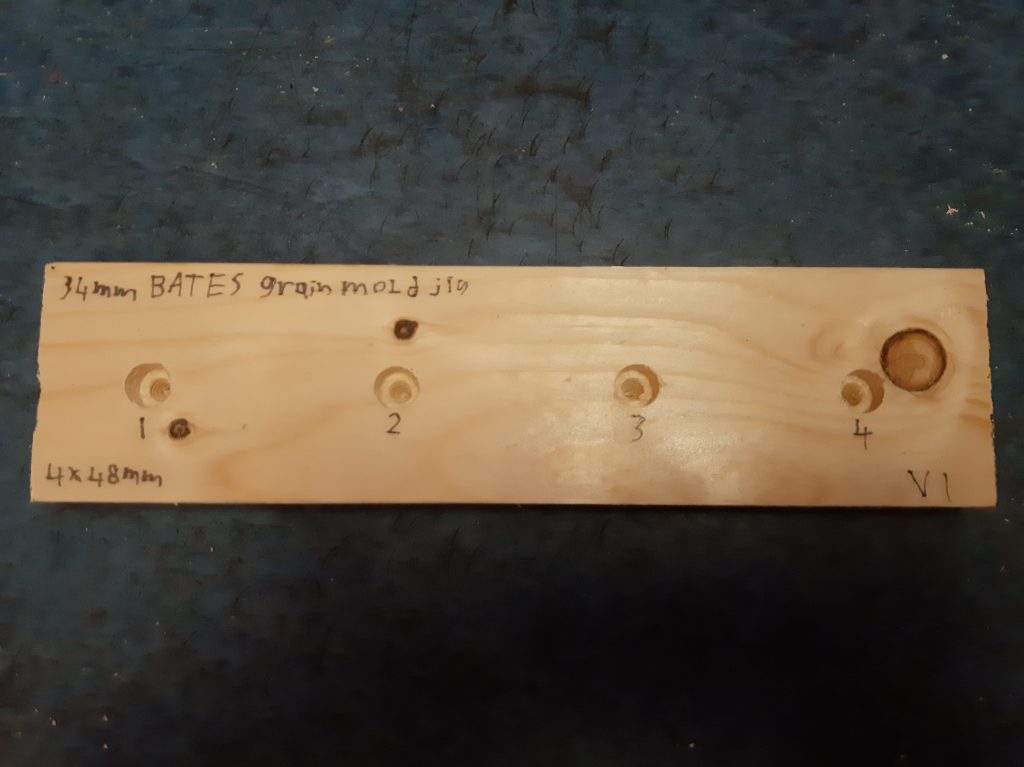
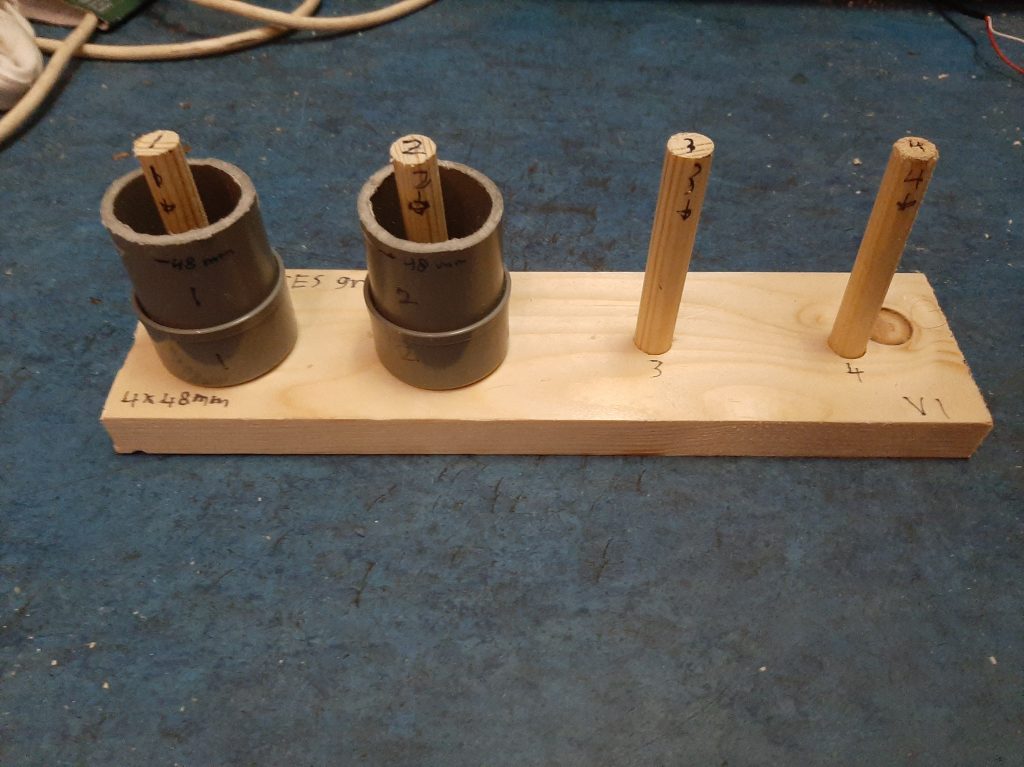
This was repeated (more than) 4 times to form these here grains
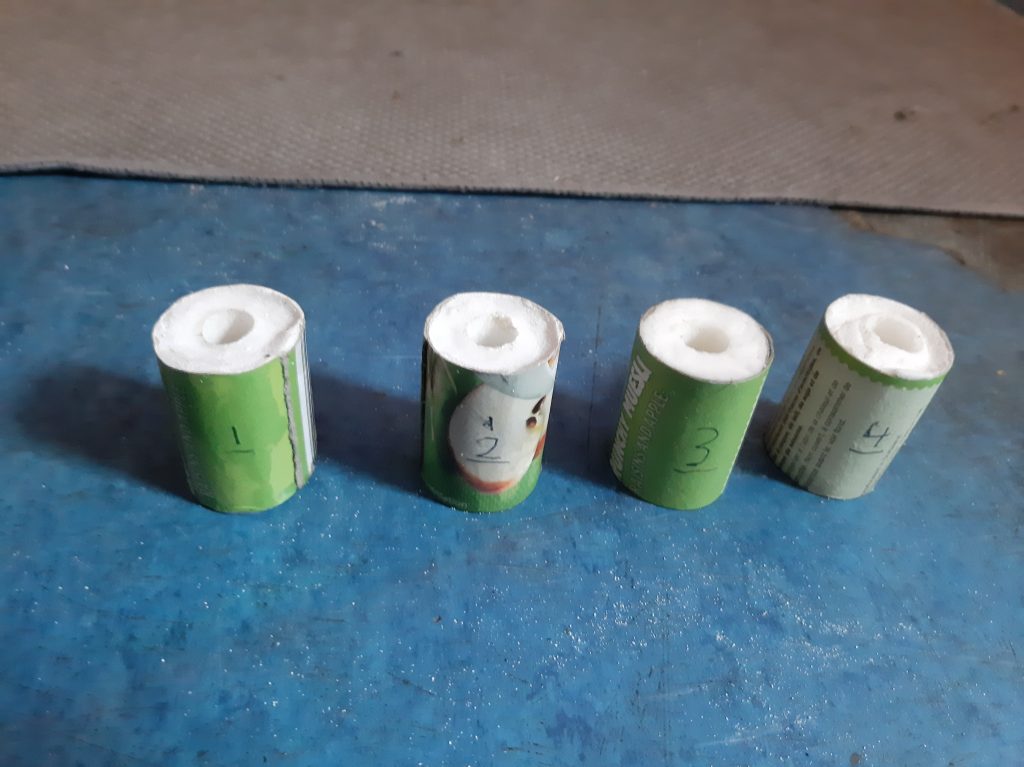
For use in MM-38, these can’t just be loosely inserted into the combustion chamber, so they are spaced apart and then wrapped in a further layer of sacrificial cardboard liner, to protect the thin aluminium walls of the motor
Which is then glued shut

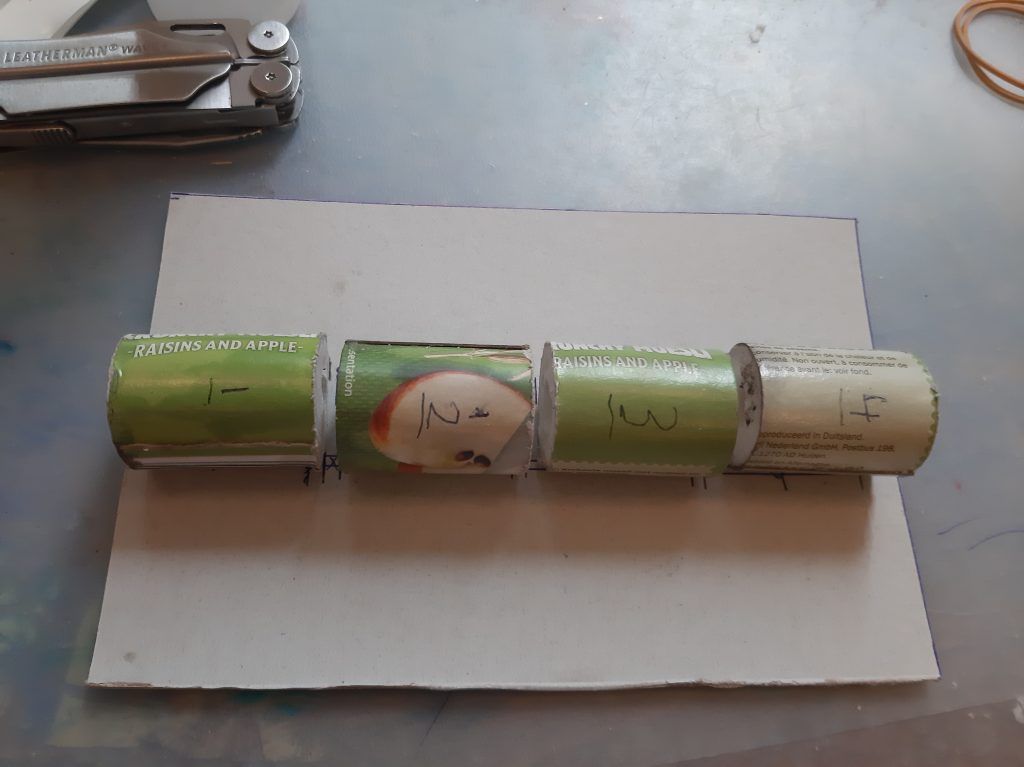
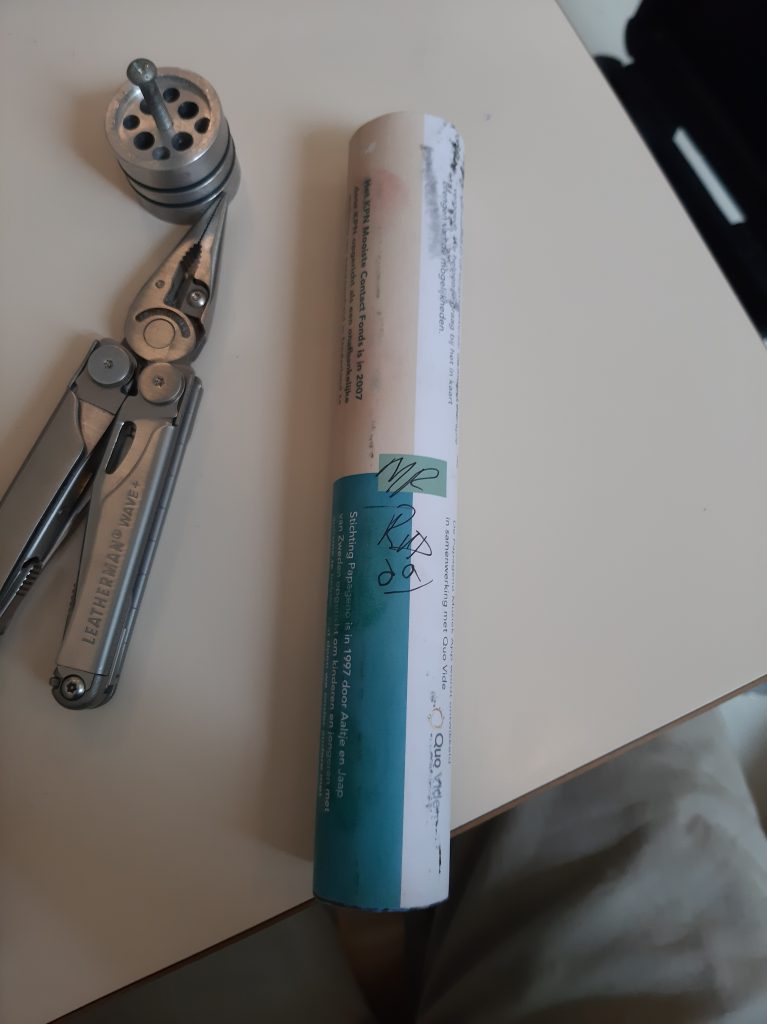
Many thanks to them!
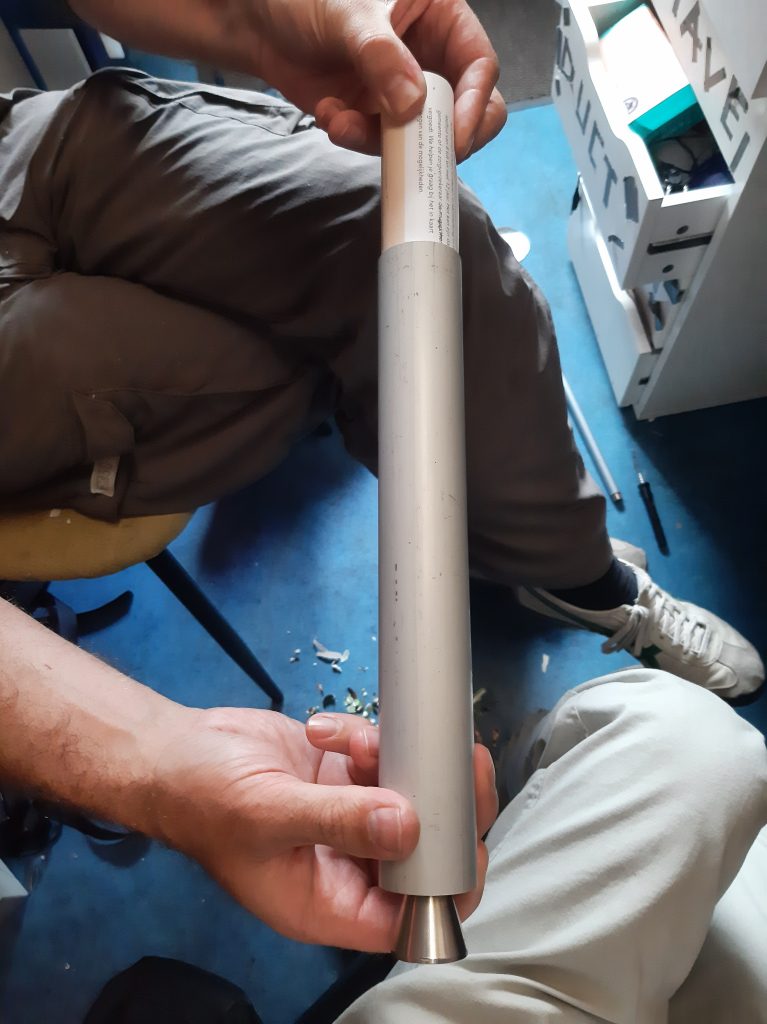
| Table | Length | Weight | Internal Dia | External Dia |
|---|---|---|---|---|
| Grain’s (on measurement) | 47mm | 57g | 12mm | 34mm |
| Grain’s (now) | 45mm | ±55.7g | 12mm | 34mm |
| Complete Assembly | 204.5mm | 231g | N/A | 34.5mm |
Due to human error, the grains were a few millimeters too long to properly fit the specifications specified, so they were ‘Shaved’ down to size by my colleague
Stupidly, I forgot to weigh the grains after ‘shaving’ off excess fuel to get them to the right size, so the estimated per grain weight is estimated, I do however know that the liner is 7.87 grams, so the total weight of the fuel grains (which includes their own separate cardboard liner) would be 223.1 or thereabouts
A respectable amount of fuel either way
This assembly is now considered finished, and will be tested in MM-38, results of this can be found here after the test is complete

